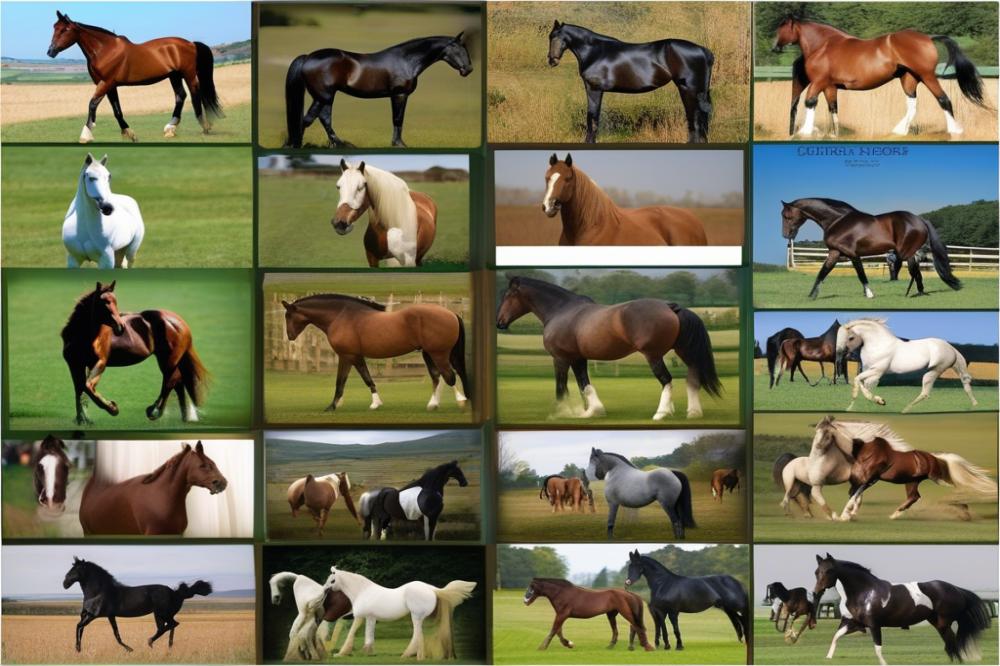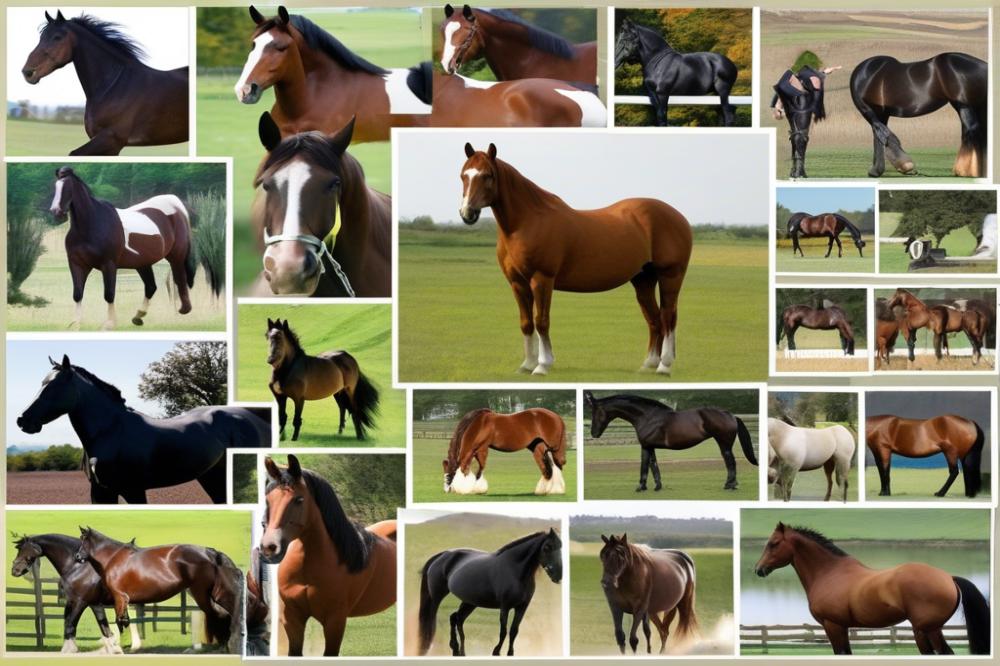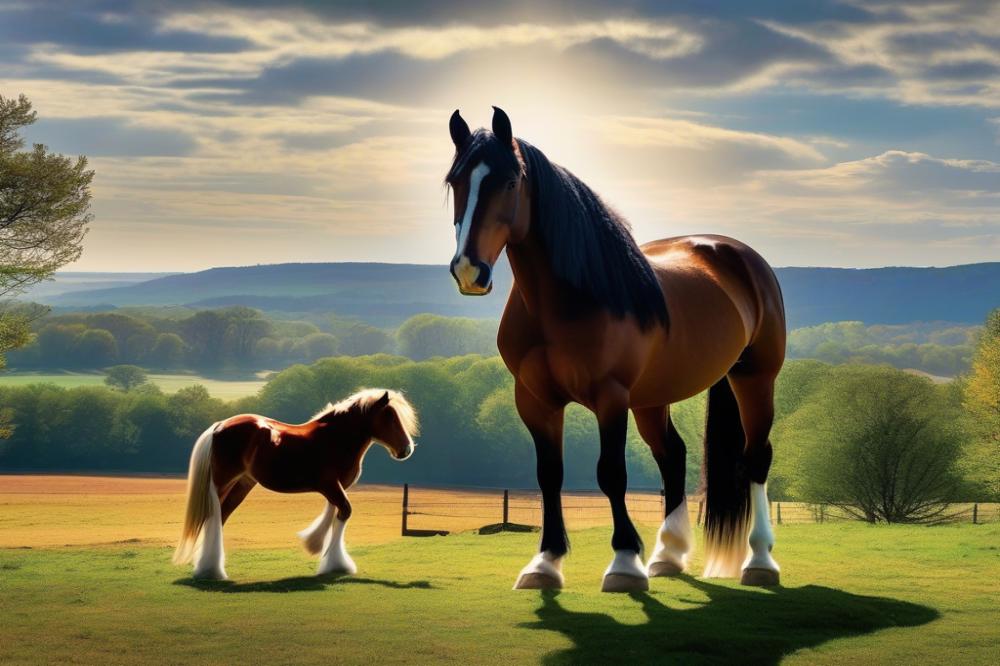Introduction
Horses have been an essential part of human history for thousands of years. Across the globe, various breeds have developed, each with its distinct traits. They come in many shapes, colors, and sizes, reflecting their diverse backgrounds and purposes. From workhorses to majestic show animals, these creatures have formed a remarkable link with humanity.
Size often plays a critical role in how these majestic animals are perceived. In the equine world, larger breeds capture attention and admiration. Their sheer stature can be intimidating, yet it also represents power, strength, and resilience. Owners and enthusiasts value size for different reasons, from their ability to perform heavy tasks to their commanding presence in competitive events.
This article explores the largest horse breeds, highlighting the characteristics that set them apart. These Equine Titans dominate not just in physical stature but also in their contributions to various fields. From draft horses that plow fields to elegant show horses that grace competition arenas, each breed has an important story. Let’s dive into the world of these remarkable animals and discover what makes them so special.
largest horse breeds

When discussing large horses, it is important to define what constitutes the biggest breeds. Generally, those considered massive exhibit significant height and weight. Their stature makes them stand out in any setting, whether in a field or a show ring.
Size criteria for these horses typically involve height measured at the withers. A common benchmark is a minimum height of 16 hands, or 64 inches. Weight classifications also vary, but large breeds can weigh anywhere from 1,200 to over 2,000 pounds. This significant mass supports their strength and endurance.
Comparing horse size among different breeds provides interesting insights. For instance, the Belgian horse is known for its incredible bulk and can weigh as much as 2,000 pounds. In contrast, the Shire horse, another giant, often reaches similar weights but stands taller. Meanwhile, the Clydesdale, famous for its distinctive feathers, usually weighs less but still towers above many other breeds.
Different breeds display remarkable diversity. The Percheron is another breed that showcases an impressive combination of height and strength. While variations in size exist, all these horses share an undeniable commanding presence. Understanding their physical traits enhances appreciation for their roles in agriculture, transportation, and companionship.
Top Breeds: Clydesdale and Shire

Clydesdale: History, Size, Temperament, and Uses
Clydesdales have a rich history that dates back to Scotland in the 18th century. Originally bred for heavy farm work, these horses were vital for moving goods and plowing fields. Their impressive stature often turns heads; males can stand between 16 to 18 hands tall and weigh up to 2,000 pounds. These horses are known for their distinctive feathering on their lower legs and their striking bay coat, which often features white markings.
Temperament plays a huge role in their charm. Clydesdales are generally gentle giants. They possess a calm disposition, making them great companions and working partners. Many owners appreciate their friendliness and willingness to learn. Because of their size and strength, they have become popular in various fields, especially in agriculture and transportation. Today, they are often seen pulling carriages and parade floats, enchanting audiences everywhere.
Shire: Origin, Physical Attributes, and Role in Agriculture
Shire horses trace their roots back to England, where they were bred for heavy draft work. They are among the tallest horse breeds, boasting impressive heights that can exceed 17 hands. Shires are known for their muscular build and powerful limbs. Their coats usually range from black to bay and gray, adorned with lovely white markings.
This breed has played an essential role in agriculture for centuries. The Shire’s strength made it ideal for pulling plows and heavy loads. Farmers relied on these strong animals to help with labor-intensive tasks, improving efficiencies on their farms. Despite advancements in machinery, Shires still hold a special place in equestrian events and countryside shows. Their gentle nature and willingness to work hard make them a favorite among enthusiasts.
Belgian and Percheron
Belgian
The Belgian horse is notable for its impressive size and gentle demeanor. Many consider this breed a true giant among equines. With powerful muscles and a sturdy build, Belgians historically played a crucial role in agriculture. Farmers valued these horses for their ability to pull heavy loads and plow fields. Their gentle nature makes them great companions and working partners. People often find them easy to handle, even with their massive stature. Some have even described them as gentle giants. Belgians are not only strong; their calm temperament is a friend to both seasoned riders and beginners alike.
Percheron
The Percheron stands out for its versatility and endurance. Originally from the rugged terrain of France, this breed has adapted to various tasks. Farmers and riders appreciate the Percheron’s ability to thrive in different environments. They excel in both work and leisure. Thanks to their intelligence, training them can be a smooth process. Percherons are often seen in competitive driving, showcasing their agility and strength. These horses have significantly impacted the draft horse industry. Their contributions continue to be felt in agriculture and various equestrian sports. Many admire their striking appearance and powerful movement, which captivate audiences everywhere.
Friesians and Heavy Horses
Friesian: Elegance, Strength, and Historical Significance
Friesians are among the most striking horses. Their shiny black coats shimmer under the sun. Many admire their long manes and flowing tails. This breed traces its roots back to Friesland, a region in the Netherlands. Historically, Friesians were used in battle as warhorses. Their power and grace made them favorites among knights. Today, they shine in dressage competitions and parades. The blend of elegance and strength sets them apart from other breeds. Riders often describe the experience of riding a Friesian as a dream. It’s hard not to appreciate their majestic presence.
Overview of Heavy Horses and Their Roles in Equestrian Activities
Heavy horses refer to larger breeds, built for strength and endurance. These giants played vital roles throughout history. They helped farm fields, pulled heavy loads, and served in transportation. Draft horses, a category of heavy breeds, are known for their muscle. Many still fulfill similar tasks on farms today. In addition to work, they also participate in competitions. Events like pulling contests show off their incredible strength. Families and enthusiasts often engage with these breeds at local fairs. Heavy horses have a gentle temperament, making them great companions. Their solid build and calm nature attract many riders. Each horse brings its own charm to the equestrian world.
The Role of Draft Horses
Draft horses are powerful animals, distinguished by their size and strength. Common breeds include the Clydesdale, Percheron, and Belgian. These horses typically have wide bodies and strong limbs, allowing them to perform heavy work. Their calm demeanor makes them suitable for various tasks. Many draft breeds are known for their gentle nature, which helps them bond with humans.
Historically, these horses played a crucial role in agriculture. Farmers relied on them to pull plows and haul heavy loads. Before modern machinery, draft horses were integral to daily farm life. The strength of these animals allowed them to work long hours in tough conditions. Their presence made it possible for small farms to thrive.
Modern society still finds value in draft horses. Although tractors and trucks have taken over many tasks, these horses are still utilized in certain areas. Some people use them for logging in dense forests where machines cannot easily operate. Others engage them in recreational activities, such as riding and showing at competitions. These horses are often showcased in parades and events, highlighting their beauty and skill.
In addition to their practical uses, draft horses have a special place in the hearts of many. They represent a connection to a more traditional way of life. Their strength and grace captivate horse lovers and spectators alike. By caring for them, owners also help keep the history of these majestic creatures alive.
Horse Size and Health Considerations
Large horse breeds present distinct challenges regarding their health and care. Size impacts many aspects of a horse’s life. Bigger animals often face a higher risk of certain health issues. Joint problems are common in giants due to the weight they carry. The risk of laminitis also increases with larger bodies. This condition can lead to significant pain and can be very serious.
Proper management is necessary to prevent these issues. Regular veterinary check-ups become even more crucial for big horses. Preventive care can help catch problems early. Farriers, or hoof specialists, are essential for maintaining their hooves. Large horses tend to require more trimming than average sizes.
Nutritional needs differ significantly for larger horse breeds. Caloric intake must be carefully monitored. A balanced diet is key to their well-being. Overfeeding can lead to obesity, which compounds health risks. Owners should provide hay, grains, and supplements as needed. Consulting with a veterinarian or equine nutritionist can offer tailored advice.
Exercise is vital, yet challenging for these large animals. Regular, low-impact workouts help maintain fitness without stressing their joints. Grazing time should also be encouraged. It allows them to move while enjoying the outdoors. Safe environments free from hazards are necessary for their physical activities.
On a different note, social interactions play a big role in health too. Large horses can sometimes be more dominant within a herd. This can lead to stress if not managed properly. Companionship with other horses helps them feel secure. Understand that every horse has unique personality traits, which can affect their behavior.
Final Thoughts on Equine Titans
The majesty of large horse breeds, such as the Shire and Clydesdale, captivates anyone who encounters them. These animals are not just notable for their size, but also for their beauty and strength. Their imposing stature and gentle nature remind us of a time when horses played vital roles in agriculture and transportation. Understanding these equine titans connects us to history as well as modern practices.
Appreciating these magnificent creatures enriches our perspective on the animal kingdom. Each breed, with its distinct characteristics, brings unique qualities to the table. Recognizing the diversity among horses helps foster respect for all animals. This admiration encourages stewardship and conservation efforts that benefit both horses and their environments.
In our ever-changing world, the role of large horse breeds remains significant. They continue to serve in various capacities, from working on farms to providing companionship. Their influence transcends mere utility; they represent the connection humans have with animals. Ultimately, horses remind us of the bonds we share with nature, inviting us to cherish and appreciate the extraordinary beings that walk among us.



